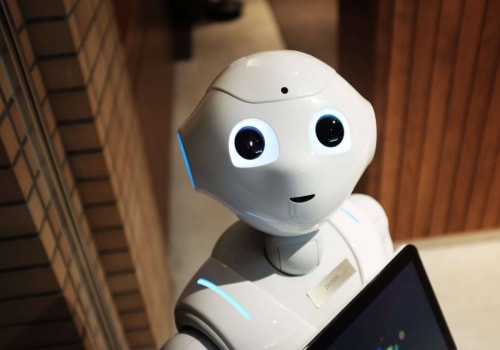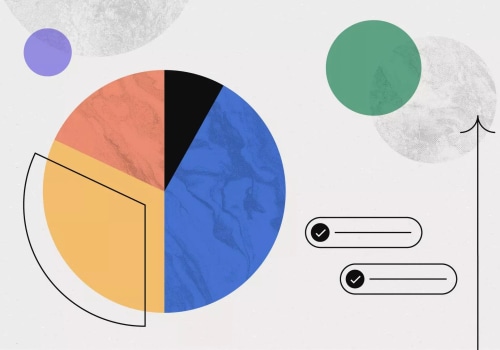AI models can be used to determine the best price for each item using data on seasonality and price elasticity, along with real-time inputs on inventory levels and competing products and prices. Enable JS and turn off any ad blocker. Artificial intelligence (AI) can help optimize pricing at any time to satisfy customers and maintain profit margins. Setting the right price for a good or service is an age-old problem in economic theory.
There are a large number of pricing strategies that depend on the objective sought. One company may seek to maximize the profitability of each unit sold or of the global market share, while another company needs to access a new market or protect an existing one. In addition, different scenarios for different products or customer segments can coexist in the same company. In this blog post, we'll introduce the problem of price optimization for retail, which has its own peculiarities, and how retailers can harness the enormous power of machine learning technology to create effective pricing solutions.
Since it is now very easy for a customer to compare prices thanks to online catalogs, specialized search tools or collaborative platforms, retailers must pay close attention to several parameters when setting prices. Factors such as competition, market positioning, production costs, and distribution costs play a key role in getting retailers to make the right move. See this example to dive deeper into an analysis of actual sales data for an online retailer. Machine learning can be of great help in this case and have a huge impact on KPIs.
Its power lies in the fact that the algorithms developed can learn patterns from data, rather than being explicitly programmed. Machine learning models can continuously integrate new information and detect emerging trends or new demands. The use of machine learning is a very attractive approach for retailers. Instead of using, for example, aggressive general discounts (which is often a bad strategy), they can benefit from predictive models that allow them to determine the best price for each product or service.
Understand how customers will react to different pricing strategies for products and services, that is,. Finding the best prices for a given company, taking into account its objectives. Pricing systems have evolved from the early 1970s to the present, going from applying very simple strategies, such as a standard margin to the base cost, to being able to predict the demand for products or services and find the best price to achieve the established KPI. Price optimization techniques can help retailers assess the potential impact of sales promotions or estimate the correct price for each product if they want to sell it in a given period of time.
Although sometimes these two concepts are used synonymously, they represent different concepts. The main difference is that dynamic pricing is a particular pricing strategy, while price optimization can use any type of pricing strategy to achieve its objectives. For example, by using a dynamic pricing strategy, retailers can dynamically modify the prices of their products to match the price of the competition. This strategy would involve changing prices very frequently, but it wouldn't necessarily be the best possible strategy.
Price optimization techniques focus on finding the price that maximizes a defined cost function (p. Ex. Depending on the particular use case, this can be done dynamically and, therefore, combining dynamic pricing and optimization is the ideal choice for many scenarios. Finally, pricing automation can be developed with or without machine learning.
The difference between these two approaches is that without machine learning, pricing rules are predefined, while with machine learning, the rules are obtained in a data-based way. On the other hand, a price automation solution with machine learning involves training a model capable of automatically setting the price of items in the same way that a human expert would do it on a large scale. The model could include historical data and different product characteristics, as well as unstructured data, such as images and text, and it would learn pricing rules without explicit coding, adapting to changes in the environment in a much richer and more dynamic way. The pricing strategies used in the retail world have some peculiarities.
For example, retailers can determine the prices of their items by accepting the manufacturer's suggested price (commonly known as MSRP). This is particularly true in the case of conventional products. Another simple strategy is Keystone, which consists of defining the sales price as double the price or wholesale cost of the product. While these and other strategies are widely used, machine learning allows retailers to develop more complex strategies that work much better to achieve their KPIs.
Machine learning techniques can be used in a variety of ways to optimize pricing. Let's take a look at a typical scenario. For example, one widely adopted pricing strategy technique that improves this technology is dynamic pricing. With this strategy, retailers can dynamically modify the prices of their products based on current market demand.
However, changing prices dynamically without considering an objective function can lead to suboptimal results. That's why we suggest using dynamic pricing along with price optimization techniques. Let's look at the steps needed to develop a machine learning solution for this use case. For more information, see this publication that highlights practical steps to prepare your data for price optimization.
Depending on the established KPIs and the way the solution is modeled, some of this data may not be necessary. For example, if there is little or no information about customers, as is often the case with traditional retailers, however, the model can be trained. On the contrary, competitive information is crucial for a competitive pricing strategy. In many cases, it is even possible to connect through APIs to this information or to monitor it online.
See an example of real-life data collection here. The next step is to define the strategic objectives and the constraints. Retailers can pursue a single, clear goal of maximizing profits. However, they may also be interested in customer loyalty (e.g.
Increase the net promoter score (or conversion rate) or attract a new segment (p. Restrictions may be legal in nature (e.g. If any type of sales price control is carried out), they may have to do with the company's reputation (e.g. Fearing a bad image (due to applying favorable prices only to a certain customer segment) or being related to physical aspects such as the capacity of a store or the average supply time.
Each particular scenario will affect the way the problem is modeled. It is possible, and usually very interesting, to try different scenarios for the same retailer, which involves the use of different models. You can see a real example of demand forecasting modeling here. Once the model is trained, the prices of the new products can be estimated and tested.
Depending on the model, the estimate can be an exact price or a range. Subsequently, the retailer can manually adjust the prices obtained by the model and optimize them periodically. Machine learning can be used for other price-related tasks in retail. For example, given a new product, a bundling algorithm can quickly associate it with similar products to obtain a probable price segment.
Another compelling possibility is to jointly predict prices and demand for items that were never sold. When efforts are made to sell more pens, are related products, such as ink, notebooks, or work schedules affected? Are customers who buy a certain computer more or less likely to buy monitors the following month? Are customers inactive for the past year sensitive to a promotion campaign? These are just a few examples of the questions that machine learning models can help answer. In addition to automation and speed, using machine learning to optimize pricing has several advantages. First, machine learning models can consider a large number of products and optimize pricing globally.
The number and nature of the parameters and their multiple sources and channels allow them to make decisions using precise criteria. This is a daunting task if retailers try to do it manually or even using basic software. For example, it is known that changing the price of one product often affects the sales of other products in ways that are very difficult for a human being to predict. In most cases, the accuracy of a machine learning solution will be significantly higher than that of a human.
In addition, retailers can modify the KPI and immediately see how the models recalculate prices for the new objectives. Second, by analyzing a large amount of past and current data, machine learning can anticipate trends well in advance. This is a key issue that allows retailers to make the right decisions to adjust prices. Finally, in the case of a competitive pricing strategy, machine learning solutions can benefit from systems that can continuously crawl the web and social media to gather valuable information about competitors' prices for the same or similar products, what customers say about products and competition, and a competitor's offers for certain products, as well as their price history over the past few days or weeks.
A system that can learn most of what happens in the market allows retailers to have more information than their competitors to make better decisions. While it may seem more natural to apply machine learning in the case of e-commerce retailers, traditional retailers can take full advantage of this technology. In fact, price changes occur less frequently in traditional retailers and, therefore, they have more room to improve and adapt to current demand. Digital price tags allow traditional retailers to make as many price changes as e-commerce sites.
However, even without digital price tags, weekly or monthly price changes can be made to meet current demand and maximize profits. We have demonstrated our approach with one of the world's largest travel retailers, with more than 400 stores around the world and more than 160 million customers a year. We help them increase gross margin by 28% by making weekly in-store price changes. Our answer is “yes”, but with new things to consider.
In a BAU scenario, machine learning models are likely to take advantage of historical sales and correlated external data to provide information such as seasonality, relevant sales dates, and competitive reactions. During a crisis, since the market is not behaving as usual, historical data is likely to be insufficient to predict future sales. To fight back, we would have to increase the importance of short-term information (p. Daily sales), on the understanding that the recent past is much better suited to predicting the future.
In practice, this means adjusting the function engineering process to weigh short-term sales delays rather than historical ones. In short, in this new economic scenario, our analysis remains that machine learning could be used to a large extent to create accurate demand forecasts and optimize the pricing strategy. The key adaptations to a BAU scenario would be to incorporate more real-time data (macroeconomic and market data) + adapt the models to account for short-term lags versus. It's also worth noting that business understanding and human judgment will continue to play a key role in creating this solution.
Price optimization has been used, with significant success, in sectors such as hospitality, airlines, car rentals, and e-commerce retail. The hospitality industry continues to employ dynamic pricing strategies, based entirely on machine learning. Currently, Airbnb proposes a dynamic pricing tool that recommends prices to its hosts, taking into account parameters such as seasonality, the day of the week or special events, and also more sophisticated factors, such as photos of the property to be rented or the prices applied in the neighborhood. Other companies, such as eBay and Uber, have taken similar approaches.
In the retail world, the most popular examples have been in e-commerce, but traditional retailers haven't been left behind. Although it's difficult to know precisely all the retail companies that use machine learning to optimize their pricing and operating processes, there are some well-known success stories. Companies like Ralph Lauren and Michael Kors use machine learning to offer fewer discounts and better manage their inventory, with the goal of increasing profit margins, even at the risk of losing some revenue. Another well-known case is that of Zara, which uses machine learning to minimize promotions and adapt quickly to changing trends.
There are many other success stories, such as Morrisons —one of the largest supermarket chains in the United Kingdom—, bonprix —an international fashion company headquartered in Germany— or Monoprice —an American retailer of B2B and B2C electronics—, among others. While there is no information available on the exact modeling of the problems, it is known that these companies are harnessing the power of machine learning to increase their revenues and improve operations. Nowadays, the world is changing prices more frequently and it is imperative to use pricing strategies based on state-of-the-art data. In a study conducted by Bain & Company, they show that the best performing companies in all sectors are almost twice as likely to set prices dynamically.
Whether it's an e-commerce marketplace or a traditional retail store, both are taking advantage of the benefits of dynamic pricing and price optimization. Price optimization helps retailers understand how customers will react to different pricing strategies for products and services, and to set the best prices. Machine learning models can take into account key pricing variables (e.g. Purchase history, season, inventory, competitive prices) to find the best prices, even for extensive catalogs of products or services, that can meet established KPIs.
These models don't have to be programmed. They learn patterns from data and are able to adapt to new data. They allow retailers to quickly test different hypotheses and make the best decision. What's probably most important to keep in mind is that the use of machine learning in the retail world is continuing to expand, and everything suggests that this trend will continue in the coming years.
The question is no longer whether to apply dynamic pricing or not. But the question is how to do it to remain profitable. .











